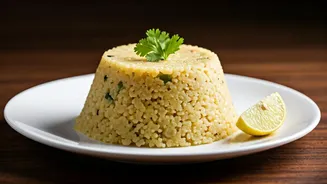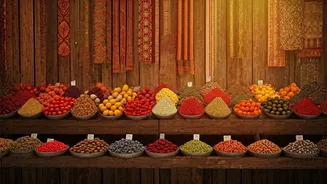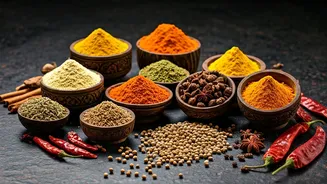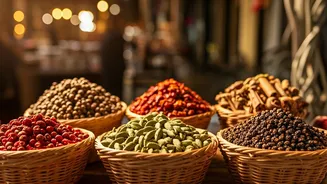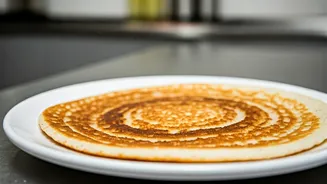Upma's Humble Beginnings
Upma, a staple in many South Indian households, traces its origins back to a simple, practical dish designed for quick preparation. The primary ingredients,
semolina (rava), water, and a blend of spices, were readily available. It was traditionally a breakfast item, perfect for busy mornings. Over time, its versatility led to regional variations. Each household, and each region, embraced their own unique twist. This included adding vegetables like peas, carrots, and onions, or incorporating nuts and lentils. Despite these variations, the core essence of the dish—its simplicity and ease of making—remained a constant, solidifying its place as a much-loved comfort food across generations. It has been transformed from a basic meal to a flavorful dish.
The Making of Upma
The preparation of upma is relatively straightforward, yet the nuances of the cooking process are important to achieve the perfect texture and flavor. First, the semolina is often dry-roasted to enhance its nutty flavor and ensure it doesn’t clump. Next, a tempering is prepared by heating oil or ghee with mustard seeds, urad dal, and other spices, allowing their aromas to infuse. Vegetables like onions, tomatoes, and green chilies are added and sautéed until softened. Water is brought to a boil, and the roasted semolina is gradually added, stirring continuously to prevent lumps from forming. The mixture simmers until the semolina absorbs the water and reaches a fluffy consistency. Garnishing with fresh coriander and a squeeze of lemon juice adds the final touches, offering a bright and zesty finish. The recipe can easily be adapted with different types of spices, vegetables, and condiments to satisfy different preferences.
Flavorful Regional Variations
The beauty of upma lies in its adaptability. This has led to the emergence of diverse regional variations, each reflecting local culinary preferences. In Tamil Nadu, the traditional version, often known as 'Rava Upma,' features the essential semolina base with the addition of mustard seeds and curry leaves. Karnataka's interpretation may incorporate a bit of sweetness, sometimes including grated coconut and a hint of sugar. In Kerala, upma can be flavored with a touch of coconut oil, infusing a distinct aroma. Furthermore, each household often has their own special touches, such as the use of different vegetables or spices. The core preparation remains the same, but the unique touch of each region adds the flavor. This diversity makes upma a versatile dish that continues to delight the taste buds of many people.
Upma's Cultural Significance
Upma goes beyond being just a breakfast; it's deeply ingrained in Indian culture. It represents convenience, comfort, and the ability to bring people together. It is a common breakfast choice, quick to prepare and satisfying for any meal. Its presence at family gatherings and celebrations is also noteworthy. It's often prepared as a special treat for guests or at religious ceremonies. The dish’s simplicity also symbolizes resourcefulness. The ability to create a fulfilling meal with simple ingredients is often admired. The practice of sharing upma highlights the values of hospitality and togetherness that are so integral to Indian culture. The dish has evolved to become more than a simple breakfast. It is a symbol of a rich heritage that is appreciated by many.
Global Recognition Explained
The inclusion of upma on the '50 Best Porridges in the World' list is a testament to its widespread appeal and excellence. The recognition suggests that the judges recognized the dish's unique flavors and cultural significance. Upma's position on the list is not just about the quality of the ingredients or the preparation. It also reflects its value and place in Indian society. The accolade brings Indian cuisine into the global spotlight, celebrating its rich and diverse culinary tradition. Upma, with its humble ingredients and simple preparation, stands alongside other worldwide dishes. This has created a sense of pride in Indian culture. The recognition highlights how a simple breakfast can travel the globe and be celebrated for its taste.
